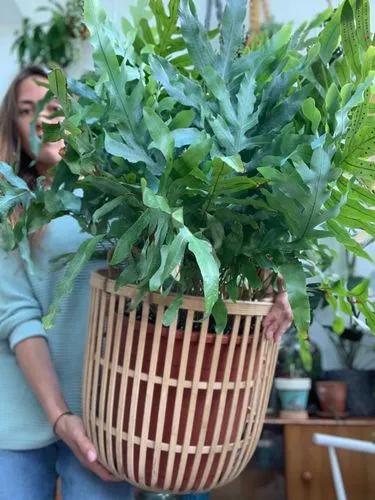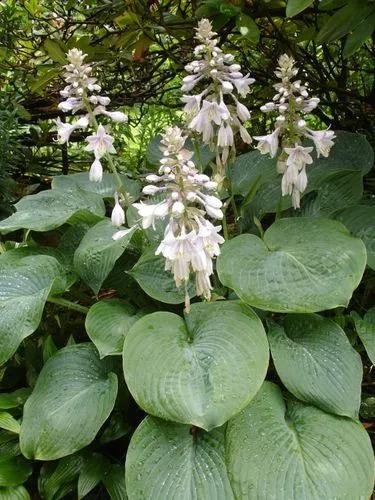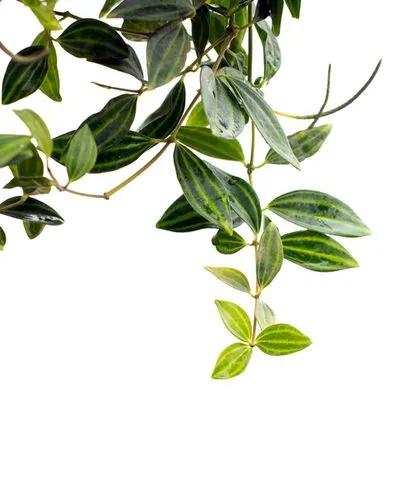Aspidistra is a perennial herbaceous plant that has creeping superficial rhizomes, single or collected in small bunches, with little or no stem, whole leaves, and fleshy bell- or cup-shaped flowers of various shapes, colors, and sizes. This plant is very well suited for novice flower growers, because it does not need a careful and special approach, everyone can handle this flower.
Cast Iron Plant Care
Aspidistra elatior



Aspidistra is native to Southeast and East Asia. Plants of this genus are part of the terrestrial flora in the humid forest regions of Eastern India, Taiwan, and Japan. And yet, the largest number of species is found in the Chinese province of Guangxi.
It is an evergreen rhizomatous perennial that grows to 24 in (60 cm) tall and broad, with glossy dark green leaves 12–20 in (30-50 cm) long and fleshy, 8-lobed cream flowers with maroon coloration on the inner surface that bloom in early summer.
Flowers, like leaves, have relatively short petioles; therefore, the flowering of the aspidistra plant is a pleasant surprise for many green thumbs. A thick, spherical, or pear-shaped berry with one or more seeds forms after the flower has been pollinated.
How to Care for the Plant

Water

Water Cast Iron plant only after the top layer of soil has dried. In the spring and summer, it will be approximately two times a week. During the cold season, the number of irrigations is greatly reduced, and they are usually performed once every seven days.

Pruning

To preserve the decorativeness of the plant, you should systematically remove all the leaf plates that look unhealthy or have begun to dry out. Cut the foliage neatly at its base. Pruning not only improves the general condition of the flower but also stimulates the growth of new foliage.

Fertilizer

Aspidistra is fed only in the spring and summer. If the plant is grown in a place with poor lighting, then it is enough to apply fertilizer to the substrate only once every three months. If it grows in a well-lit place, then top dressing is carried out once every four weeks. For top dressing, it is recommended to use water-soluble fertilizers for indoor flowers with a high content of nitrogen.

Sunlight

Aspidistra elatior develops properly even in low-light conditions. Cast Iron Plant can decorate even the most solitary nook of your dwelling. However, bear in mind that plants with striped foliage are more demanding in terms of lighting and require a lot of it. If Aspidistra is planted in a shady location, the magnificent design on its foliage will fade over time. Also, keep in mind that the plant should be reliably protected from direct sunlight during the summer.

Soil

Aspidistra can grow in a wide range of soils as long as they have proper drainage. These plants develop the best in organically rich soil with a slightly acidic to neutral pH. A rich in nutrients universal potting mix is the most suitable choice for active growth.

Propagation

Vegetative propagation is used to get more individuals by regenerating a complete plant from its part. This is how all varietal traits and genetic deviations are transmitted.
The method of propagating aspidistra by dividing the bush is marked by its simplicity and efficiency. Carry out this operation in the spring. Remove the bush from the pot and separate its root system into sections.
Propagation can also be done with a leaf from the primary bush. This process takes a little longer, but it's effective.

Temperature

The ideal temperature for Cast Iron Plant in the autumn-winter season is 60-63°F (15-17°C). The decreased air temperature will not kill the aspidistra, but even brief frosts must be avoided. If the room temperature rises, the plant will be unaffected because it can swiftly adjust to varying amounts of heat.

Container

For Cast Iron Plant, pick up a large and deep planter. The new pot should be 4-5 cm larger in diameter than the previous one. Such a flowerpot will allow the root system to develop properly and prevent frequent transplants.

Fun fact

Its common name, Cast Iron, refers to the plant's capacity to survive and thrive in a variety of challenging growth circumstances. As a result, it's an excellent low-maintenance indoor plant.

Popularity

22,361 people already have this plant 3,142 people have added this plant to their wishlists

Common pests


Frequent diseases

- Yellowing of foliage. Most often this happens due to the fact that rot appears on the roots. At the time of watering, it will be necessary to stop, the places of decay should be treated with a solution of a fungicide, and it is better to treat the substrate in a pot with a solution of potassium manganese.
- Loss of color. If the plant is in a dark place or is oversaturated with nutrients, then the bright color of the leaves may fade. To combat this, place the flower in a lighted place and exclude feeding for a while.
- Leaves do not grow. This indicates a low nitrogen content in the substrate. We recommend watering the flower with a solution of urea in a ratio of 1 liter to 1 gram.
- Dark spots on the leaves. This factor speaks of hypothermia of the flower or exposure to a draft. The leaves should be cut off and the flower placed in more favorable conditions.

Botanist’s tips

To see the flowering of cast iron plant is a very rare occurrence; for a start, it is worth providing proper conditions and care. A bud begins to form on the roots, after which it opens and a flower rises in front of us. It is similar in shape to a star and has a bright purple color, but it blooms only for a day, and after that it simply fades. In its place, a round fruit begins to form, inside which there are seeds. This process occurs in the summer, in rare cases - in the spring.
Discover more plants with the list below
Related articles






